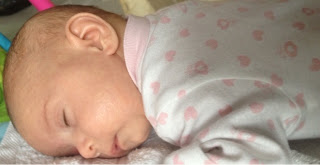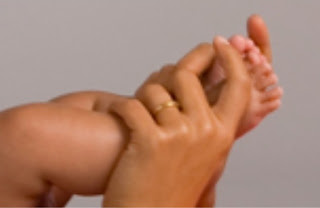To get started with weaning at between 4 - 6 months, you can start with a sippy cup, spoon, bowel and plastic bib. All the equipment you need to start the transition from a milk to
solid foods.
2.. Fresh Food Feeder [Amazon]
This innovative fresh food feeder is great for stage 1 weaning. Fruit or cooked veges can be placed into the plastic section. The fruit and vege squeezes through the small holes, in small amounts preventing choking. This is a great way to get your baby to try different textures without a big mess.
The clever design of the Doidy Cup allows your baby to transition to a cup. This trainer cup has a slanted side so that it can be tipped forward into baby's mouth without spilling.
4.
Baby Spoon Trainer [
Amazon]
For stage 1 & 2 weaning this spoon trainer can be used with any plastic spoon, training the baby to hold the spoon correctly this is a handy learning tool.
5.
Koko Baby Food Pouches and Pouch Spoons [Amazon]
If you prefer to prepare your own delicious, homemade baby food, KOKO Food Pouches are perfect
Holds 150ml / 5oz of baby food. Easy to read
measuring scale to ensure accurate portion control. Self standing for easy
filling. Double zip lock seal to prevent any leaks.
Suitable from 4+ months. BPA, Phthalate & PVC free. Microwave and
freezer safe. Perfect for freezing homemade food.
Dishwasher safe - top rack only. Pre-sterilised and leak proof.
Combine the pouch/s with one of the Boon
Food Pouch Spoons for an even easier mealtime.
6.
Squirt - Baby Food Dispensing Spoon [
Amazon]
7.
Chillpeeps Muti-purpose Teats [
Amazon]
Award winning multi-purpose teat that solves a common problem many people experience when out and about with young hungry babies and no clean sterilised bottle to use, by allowing a teat to be attached directly to a carton to feed your baby and many mineral water bottles to enable you to rehydrate your baby.
These innovative weaning pots click together for easy filling and storage, Safe to go straight from the freezer to the microwave
and comes with a special pen included for writing contents on the pot.
Amazing design with 360° rotation to alleviate the frustration of spilt food
when babies start to feed themselves. The spoon is designed so it is always horizontal, regardless of the position
of the handle, preventing the food from falling off.
When the first feeding stage is over the handle can be locked rigid for
older children.
10. Seat or High Chair
To prevent choking hazards, the baby should be able to hold their heads up and be able to sit independently in a seat or high chair.












































